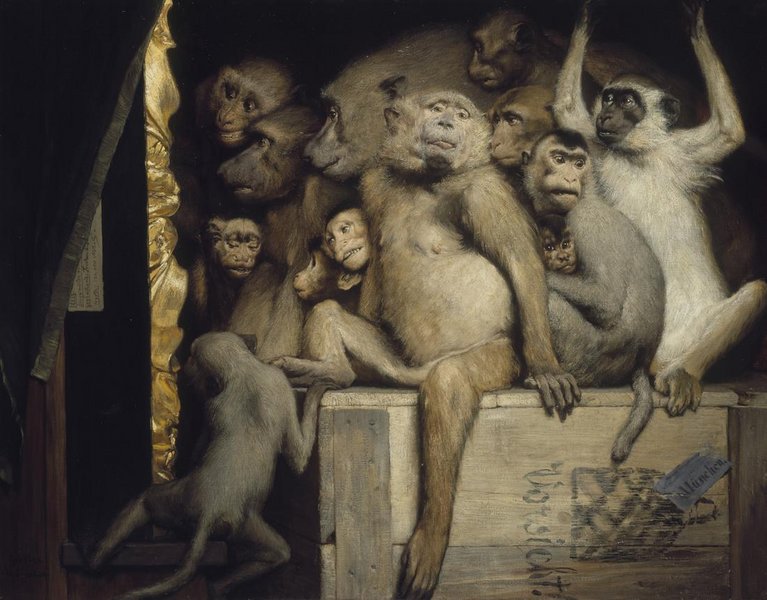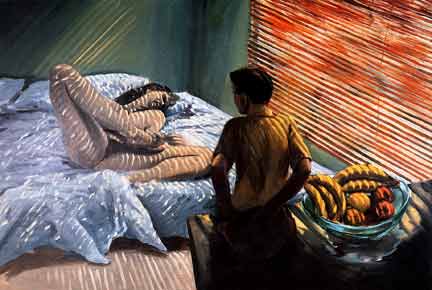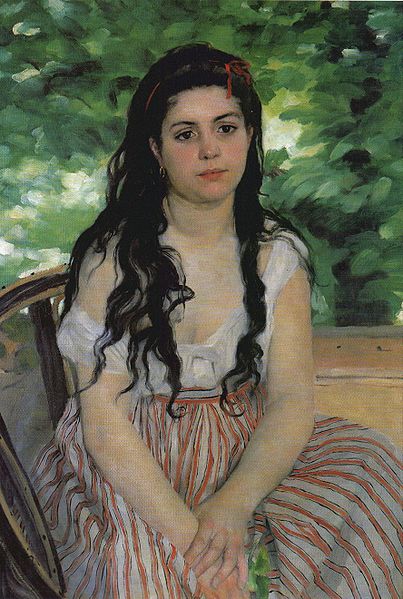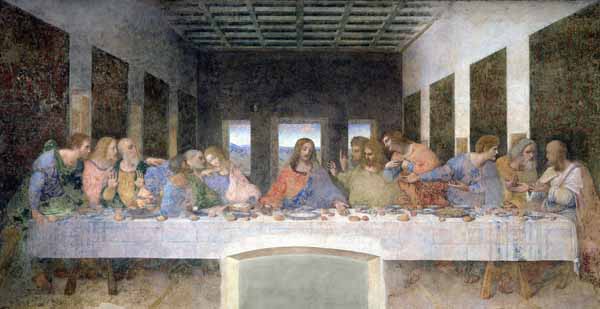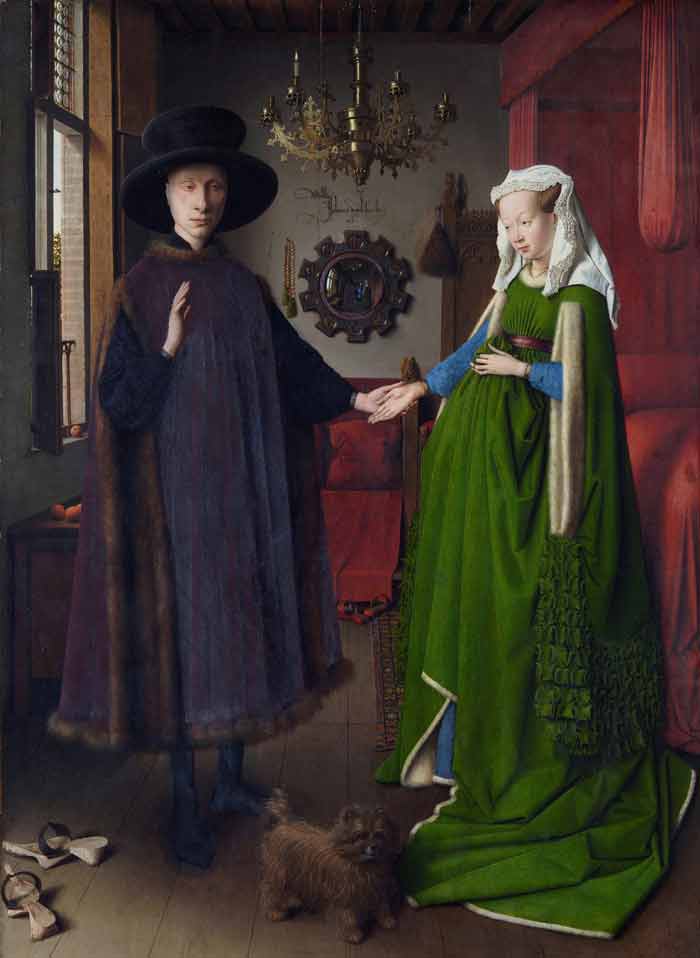On 15 Sep, 2010 With
Art criticism is the discussion or evaluation of visual art. Art critics usually criticize art in the context of aesthetics or the theory of beauty. One of criticism’s goals is the pursuit of a rational basis for art appreciation. The variety of artistic movements has resulted in a division of art criticism into different disciplines, each using vastly different criteria for their judgements. The most common division in the field of criticism is between historical criticism and evaluation, a form of art history, and contemporary criticism of work by living artists. Despite perceptions that art criticism is a much lower risk activity than making art, opinions of current art are always liable to drastic corrections with the passage of time. Critics of the…
Read More
On 8 Sep, 2010 With
In the 19th century the painting of Venus with three putti was thought to be by Sandro Botticelli. It was acquired by the Gallery with Botticelli’s famous Venus and Mars, although more was paid for the former work despite the fact that it is today the less well-known of the two pictures. The attribution of the painting now laconically entitled An Allegory has been downgraded, but this does not call into question its authenticity, however awkward and eccentric its design. Two Botticellis? In 1874 the sale of the collection of Alexander Barker, the son of a fashionable bootmaker, was eagerly watched in London. Even the Prime Minister, Benjamin Disraeli, wrote to Lady Bradford that he meant “to rise early tomorrow…
Read More
On 4 Sep, 2010 With
New European Painting emerged in the 1980s and has clearly reached a critical point of major distinction and influence in the 1990s with painters like Gerhard Richter andBracha Ettinger whose paintings have established and continue to create a new dialogue between the historical archive, American Abstraction and figurality, followed by painters like Luc Tuymans, Marlene Dumas and others. A third wave came with artists like Neo Rauch, Michaël Borremans and Chris Ofili. Bad boy, oil on linen, 66 inches x 96 inches by Eric Fischl Neo-expressionism and other related movements in painting have emerged in the final two decades of the 20th century in Europe and in the United States, but this New Painting is not expressionist. Rather it is a renovative kind of abstraction and…
Read More
On 1 Sep, 2010 With
Bohemianism refers to the practice of an unconventional lifestyle, often in the company of like-minded people, involving musical, artistic or literary pursuits, with few permanent ties. Bohemians can be wanderers, adventurers, or vagabonds. While the term Bohemian actually means origination from the Eastern European and Slavic country of Bohemia, it was later used colloquially by the French and then in the English language in the nineteenth century to describe the non-traditional lifestyles of marginalized and impoverished artists, writers, journalists, musicians, and actors in major European cities. Bohemians, in this colloquial use of the word, were associated with unorthodox or anti-establishment political or social viewpoints, which were often expressed through free love, frugality, and/orvoluntary poverty. Origin of the term The term Bohemianism emerged in France in the early 19th century when artists and creators…
Read More
On 12 Jun, 2010 With
The Last Supper The Last Supper measures 450 × 870 centimeters (15 feet × 29 ft) and covers the back wall of the dining hall at the monastery of Santa Maria delle Grazie in Milan, Italy. The theme was a traditional one for refectories, although the room was not a refectory at the time that Leonardo painted it. The main church building had only recently been completed (in 1497), but was remodeled by Bramante, hired by Ludovico Sforza to build a Sforza family mausoleum. The painting was commissioned by Sforza to be the centerpiece of the mausoleum. The lunettes above the main painting, formed by the triple arched ceiling of the refectory, are painted with Sforza coats-of-arms. The opposite wall…
Read More
On 11 Jun, 2010 With
A Brief History of Printmaking from arthistory.about.com In the beginning, before the printing press, printmaking was not considered an art form, rather a medium of communication. It was not till the 18th century that art prints began to be considered originals and not till the 19th that artists began to produce limited editions and to sign their prints along with the technical information necessary to authenticate the work. Engraving goes back to cave art, executed on stones, bones and cave walls. The duplication of engraved images goes back some 3,000 years to the Sumerians who engraved designs on stone cylinder seals. Academics think that the Chinese produced a primitive form of print, the rubbing, as far back as the 2nd…
Read More
On 10 Jun, 2010 With
HISTORY OF OIL PAINT from arthistory.about.com The oldest Mediterranean civilization, Greek, Roman or Egyptian have extensively used painting techniques based on mixtures of encaustic (probably rich in bee wax), mineral pigments (iron, copper, manganese oxides) and tempera. Vegetal oils, such as flax, walnut or poppyseed oil were known to ancient Egyptians, Greeks or Romans, but no precise indication of their use in painting may be found. Tempera is a fluid mixture of binder (organic medium), water and volatile additives (vegetal essential oils). Organic binders used by Italian artists were proteinaceous materials available from animal sources (whole egg, animal glues or milk). At the end of the roman empire and up to the Renaissance period (15th century), this ancient technique was lost…
Read More
On 23 May, 2010 With
I would like to discuss live and work of Leonardo da Vinci because, in my opinion, he was a person who changed public image of the artists, to put art on the top of human’s abilities and show the truth about the world with a men as a part of it, forever. 1452 – 1564, Vinci / Birth and formative years Born in Tuscan hill town of Vinci. First years of his live Leonardo spent in natural scenery of Arno valley, among trees with animals in neighbourhood. Surrounding like this connected young men with great sensitivity, put the greatest impact on the future and work of the Genius, who first of all loved the nature and tried to understand rules…
Read More
On 18 May, 2010 With
Leonardo da Vinci is also known as ‘Leonardo di ser Piero da Vinci’ was born on 15th April 1452 was a Tuscan polymath. He was a great mathematician, inventor, scientist, engineers, botanist, architect, anatomist, sculptor, writer, musician and a greatest painter of all times. He was born at Vinci, Florence; whose father was Piero da Vinci and his mother was a peasant girl. Da Vinci has worked in places like Bologna, Venice and Rome; he spent his last final years in France at a place offered by the King Francois l. Leonardo da Vinci has been described as a universal genius and know as the ‘Renaissance man’. He was renowned for two of his works; the Mona Lisa and The…
Read More
On 17 May, 2010 With
The traditions of Indian painting go back many centuries and can be seen in the cave murals of Ajanta, the Buddhist palm leaf manuscripts, and the Kangra schools of miniature Indian painting. Indian painting was a common practice within many households who would paint their walls and doors with exquisite natural scenes. Indian paintings are rich in color. They are bold and vibrant, yet refined and sophisticated. There is an aesthetic pleasure that can be found in modern day art and the art of civilizations of the past. From the beginning of time Indian Art has been steeped in the religions of the Indian culture. Over the years various traditions have merged to form a compelling modern art form that…
Read More


